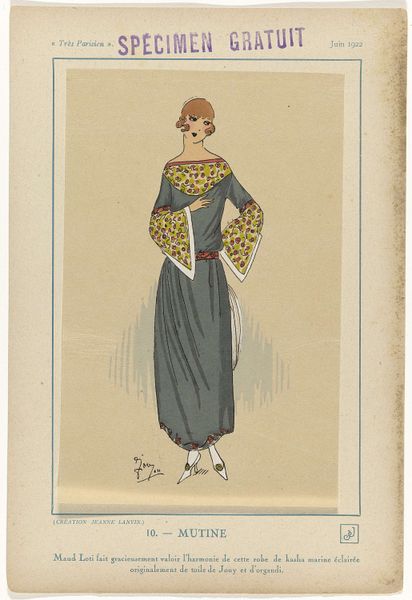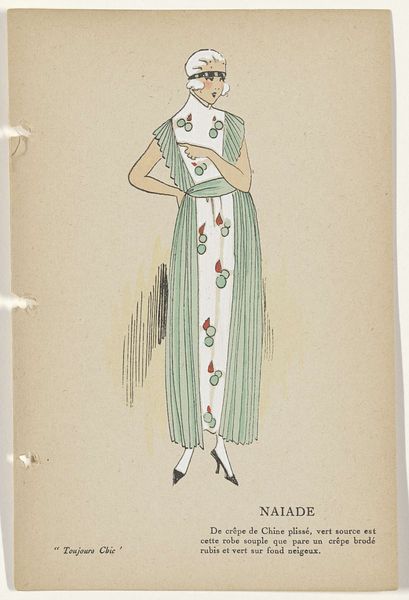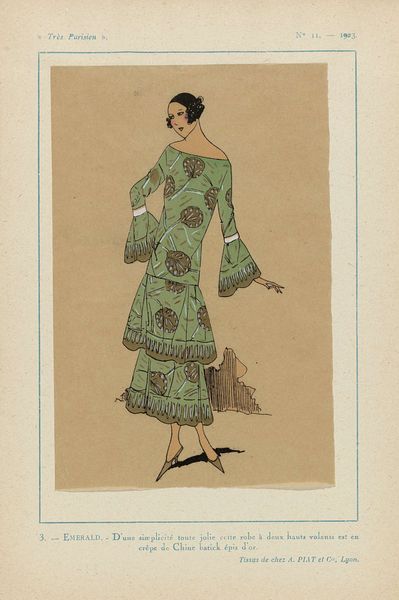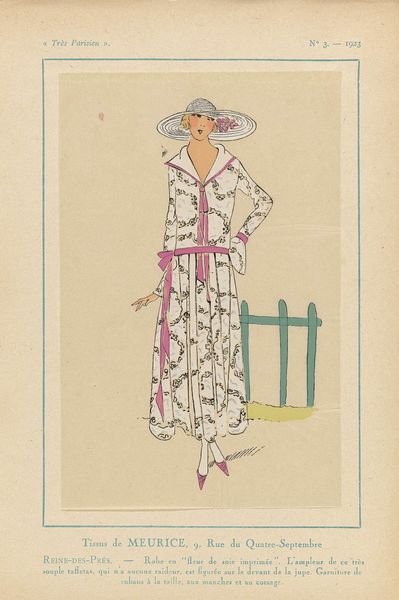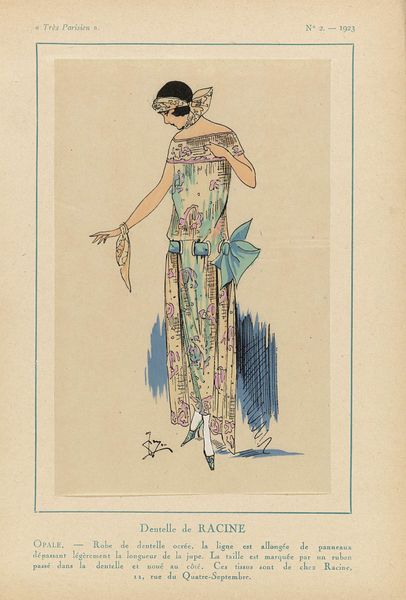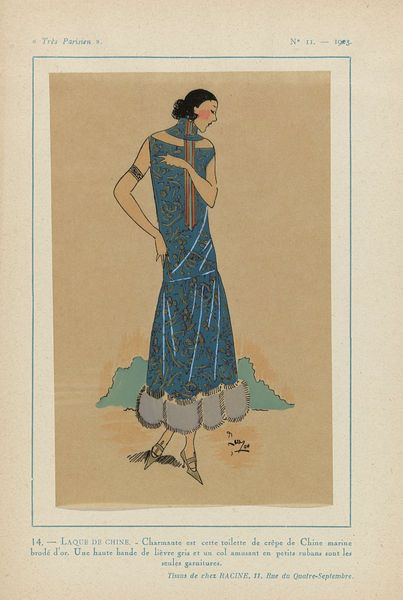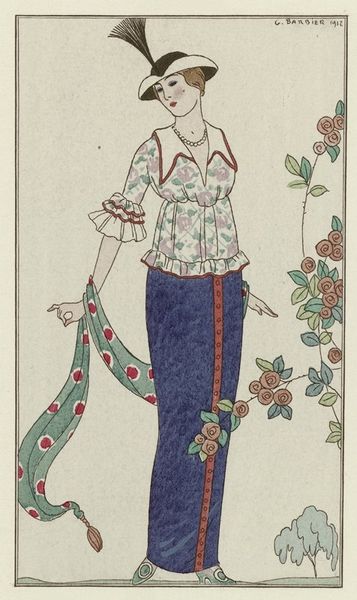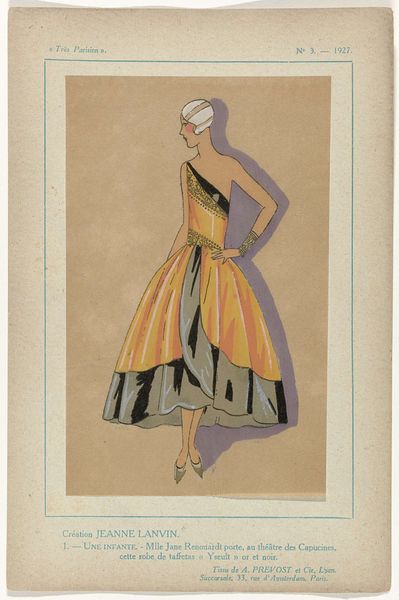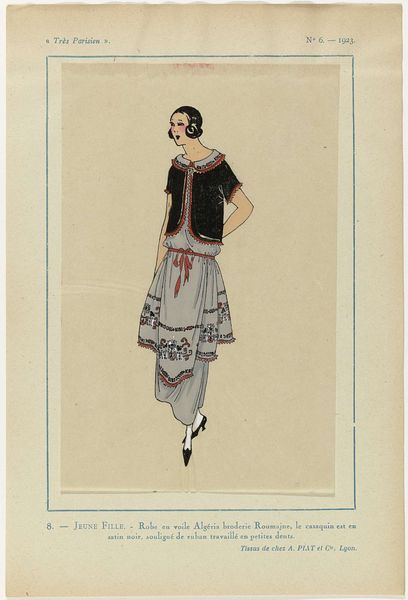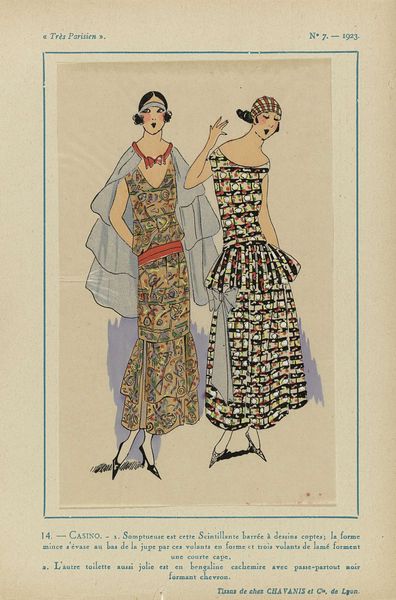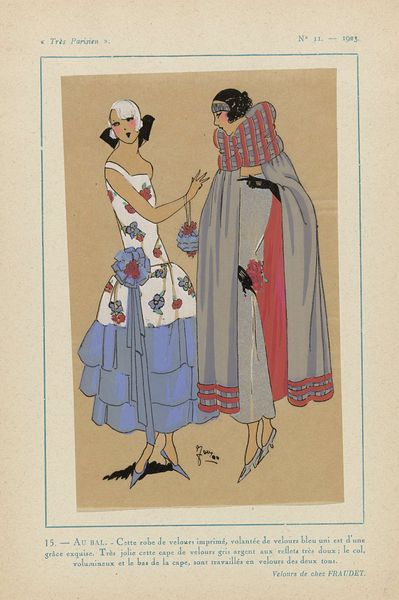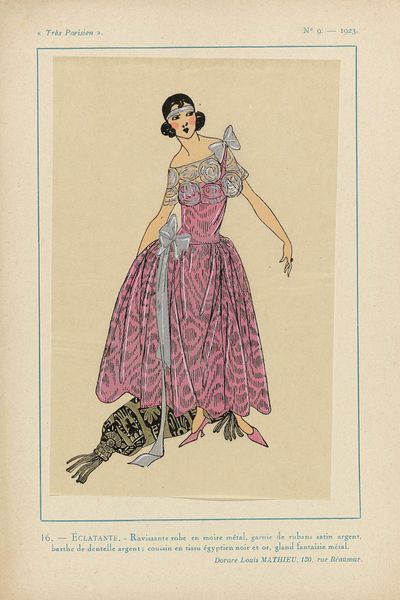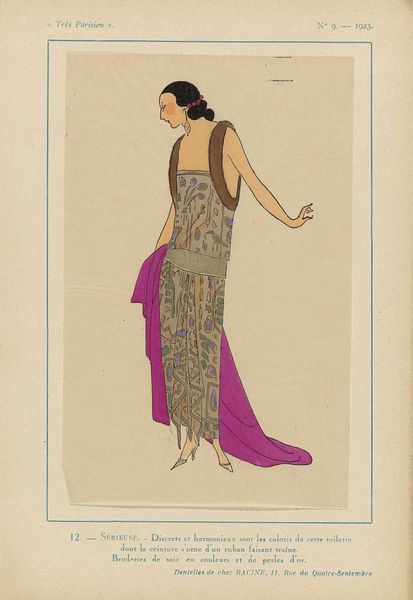
Très Parisien, 1923, No 8: 1 - FLEUR D'AUTOMNE. / Sur un fond de cr&epe violet... 1923
0:00
0:00
anonymous
Rijksmuseum
Dimensions: height 269 mm, width 180 mm
Copyright: Rijks Museum: Open Domain
Curator: Here we have a watercolor illustration titled "Trés Parisien, 1923, No 8: 1 - FLEUR D'AUTOMNE" from the Rijksmuseum collection, dating back to 1923. The piece showcases the art deco style. Editor: My first impression is of delicacy and precise construction. The limited palette and controlled lines feel very restrained, yet chic. Curator: Precisely. The artist is exploring line and form. Notice how the patterning on the dress interacts with the negative space around the figure. Semiotically, the very fine lines evoke delicacy but are rendered somewhat industrial and geometric. Editor: I find myself drawn to the imagery of the "autumn flower". It contrasts vividly against the violet background. Flowers, particularly in women's fashion of the period, symbolised transient beauty and a connection to nature—both idealized concepts. The choice of "autumn" adds a layer of melancholy or reflection. Curator: Indeed, violet being, in itself, a shade often tied to both royalty and mourning! You can't help but notice the repeating patterns – the overall dress pattern broken up with magenta rectangles. This repetition brings us back to this visual idea of early industry. There is an interest here in the rhythm created by repeated visual motifs. Editor: And think of Paris at this time—flourishing again after the Great War, but still aware of fragility. The dress becomes a visual embodiment of that era. We see that even her accessories carry symbolic weight—the choice of a headband in this context is no accident, for it signals both modernity and status, indicating a new era. Curator: The watercolour medium, so easily capable of bleeding or uncontrolled application, here demonstrates absolute constraint of form, however, it contributes to this delicate and detailed feeling. The subtle gradation in color creates depth. It creates a striking interplay of controlled form. Editor: Exactly! This fashion plate encapsulates a cultural moment where tradition and modernity intertwine, prompting us to reflect on evolving beauty ideals. Curator: Yes, considering both its semiotic components and visual layout offers a fascinating exploration of artistic technique, color relationships, and societal reflections of 1920s Parisian fashion. Editor: Absolutely! From its floral emblems to linear structures, this work embodies layered symbolic narratives of its historical moment.
Comments
No comments
Be the first to comment and join the conversation on the ultimate creative platform.
